Sponsorship Request Letter Template for Events
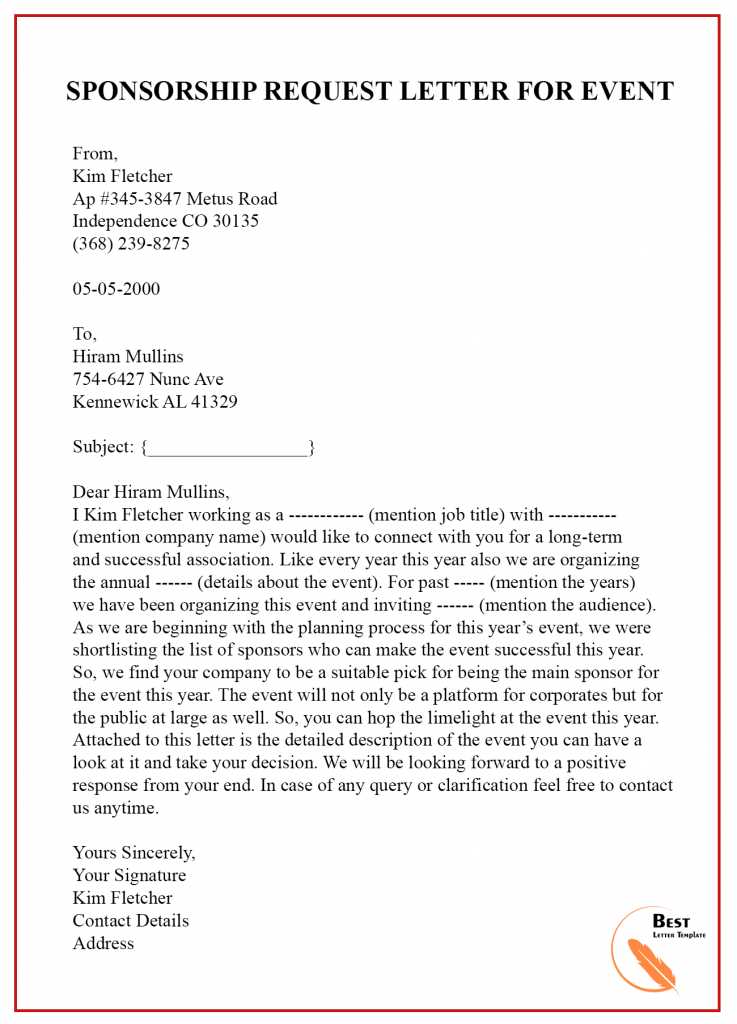
Organizing a successful gathering often requires collaboration with businesses or individuals who can provide financial or material support. Reaching out to potential partners involves creating a professional proposal that clearly outlines the mutual benefits of the partnership. Whether it’s covering costs or providing promotional opportunities, presenting your vision effectively is key to attracting the right backing.
In this guide, you’ll learn how to craft a compelling document that engages potential sponsors and convinces them of the value in becoming involved. The process involves more than simply asking for help; it’s about creating a win-win situation that resonates with your audience and showcases what the sponsor will gain in return.
By following the steps outlined here, you’ll have a solid framework to connect with those who are best suited to support your initiative. A well-crafted appeal not only highlights the importance of their involvement but also emphasizes how it aligns with their goals and values.
How to Write a Sponsorship Request
When seeking financial or in-kind support for a project, the key to success lies in crafting a clear and persuasive message. A strong appeal is essential to convey not just your needs, but also the value and benefits the partner will receive. It’s not just about asking for help, but building a compelling case that aligns your goals with theirs.
Start with a Strong Introduction
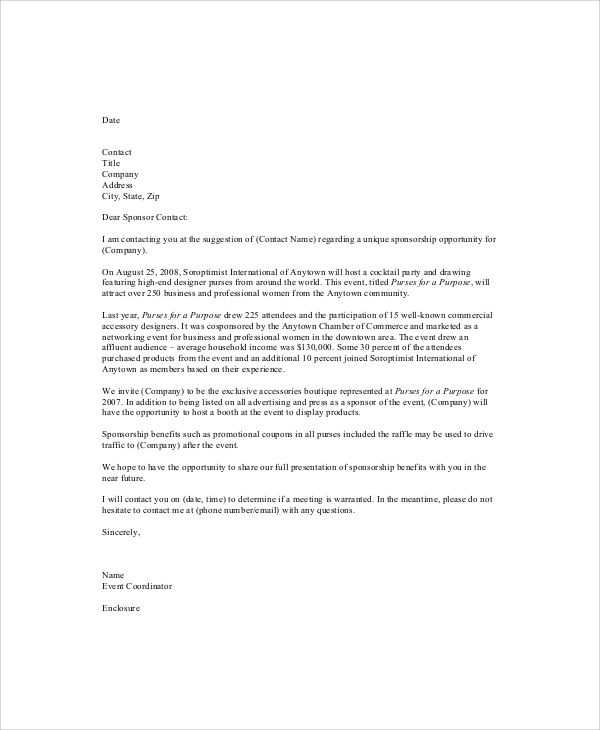
Begin by introducing yourself or your organization and briefly explaining the purpose of your initiative. Make sure to highlight its significance and why it’s worth supporting. The initial few sentences should engage the reader and immediately convey the value of the opportunity. A personalized approach can be more effective, so mention why you’ve selected them as a potential backer.
Detail the Benefits of the Partnership
Clearly outline what the sponsor will gain from being part of your initiative. Whether it’s brand visibility, access to your audience, or enhancing their corporate social responsibility efforts, emphasizing these advantages is crucial. Focus on the aspects that matter most to them and present the information in a way that makes it easy to see the potential return on their investment. A well-defined offer can turn a simple request into a mutually beneficial proposal.
Key Elements of a Successful Letter
When reaching out to potential partners, a well-structured and thoughtful message can make all the difference. A successful proposal goes beyond the basic ask and serves to establish a professional tone while highlighting the value of the partnership. By focusing on the right elements, you ensure that your communication is not only clear but also compelling.
Personalization and Introduction
The first step in crafting a persuasive proposal is personalization. Address the recipient by name and make it clear why you are specifically reaching out to them. A personalized opening shows that you’ve taken the time to understand their interests and values, making the message feel less generic. Follow this with a concise introduction of your organization or initiative, giving them context about what you’re proposing.
Clear Explanation of Needs and Benefits
Next, clearly explain what support you need and how it will be used. Be specific about the resources or contributions you’re seeking. Equally important is to highlight what the other party stands to gain. This could range from brand exposure to enhancing their corporate image, depending on what aligns with their goals. Make sure to emphasize how the partnership offers a win-win situation for both sides, creating a sense of shared success.
Understanding Sponsorship in Event Planning
Securing support from external partners is an essential part of organizing a successful gathering. These collaborations can help cover costs, enhance the event’s visibility, or provide valuable resources. Understanding how these partnerships work and what each party stands to gain is crucial in crafting an approach that benefits everyone involved.
The Role of External Partners
External partners are often integral to making an initiative possible, especially when resources are limited. Their involvement can take many forms, including financial backing, promotional support, or providing necessary services. In return, they receive the opportunity to align their brand with your initiative and access an engaged audience. Understanding their goals will help you frame your proposal in a way that highlights the mutual advantages of such a relationship.
Aligning Objectives for Mutual Gain
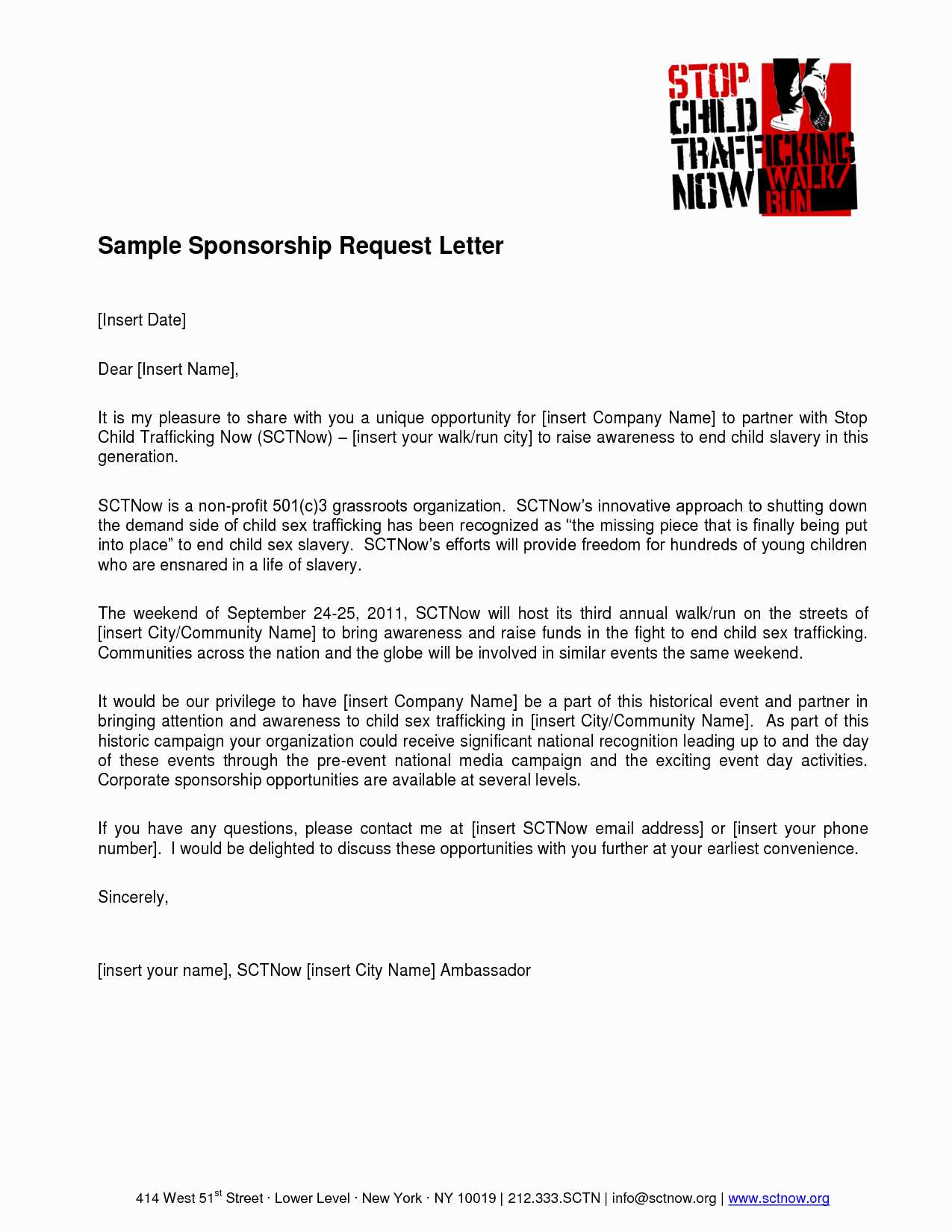
Successful collaborations are built on shared objectives. When approaching potential backers, it’s important to clearly outline how your goals align with theirs. Whether they’re looking for increased brand awareness or community engagement, showing how their involvement can help achieve these aims makes the partnership more attractive. By highlighting this synergy, you can create a partnership that provides lasting value on both sides.
Types of Sponsorships for Events
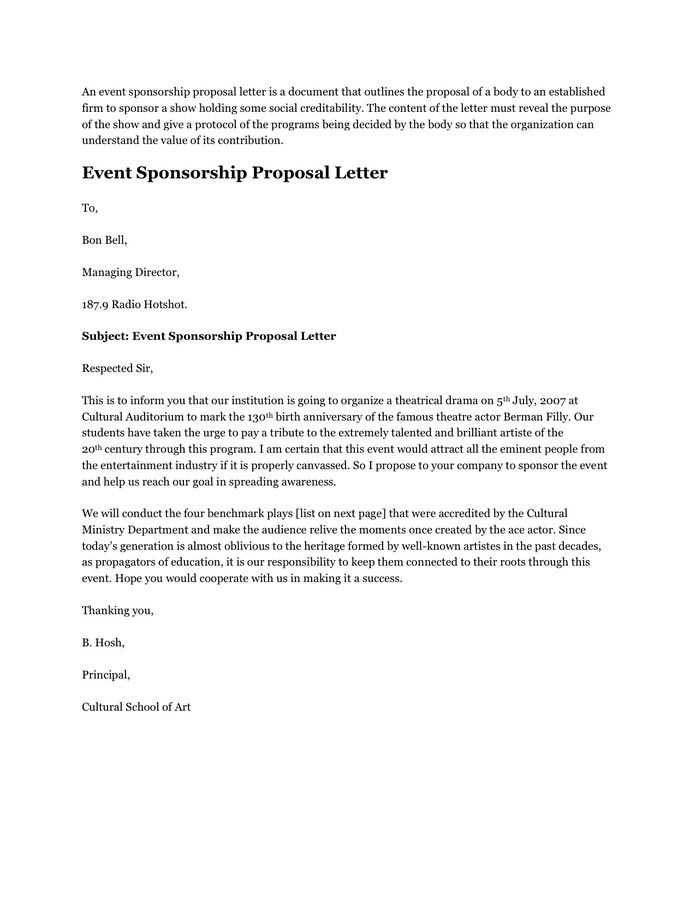
When seeking external support, it’s important to understand the different ways in which partners can contribute to your initiative. Each type of collaboration offers unique benefits and aligns with different goals. By recognizing the various forms of support available, you can tailor your approach to suit both your needs and the potential backer’s interests.
| Type of Support | Description | Benefits |
|---|---|---|
| Financial Support | Direct monetary contribution to help cover costs | Provides the necessary funding to organize and execute the initiative |
| In-Kind Contributions | Non-monetary donations such as goods, services, or facilities | Reduces operational expenses and enhances the overall experience |
| Media and Promotion | Promotion of the initiative through various media channels | Increases visibility and reaches a larger, targeted audience |
| Strategic Partnerships | Collaborating with other organizations or businesses | Provides resources and networks to enhance the initiative’s impact |
Crafting a Persuasive Message
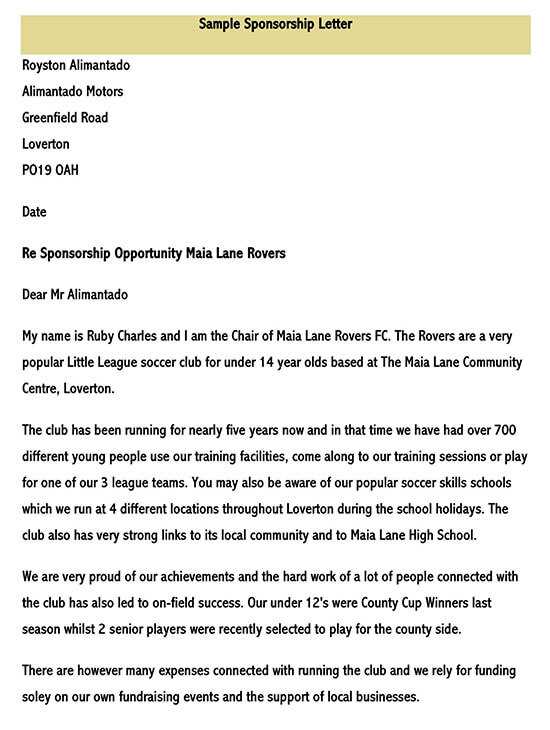
To successfully engage potential partners, it’s essential to create a message that resonates with their interests and needs. A persuasive proposal should clearly communicate the value of the partnership, highlighting the benefits and addressing any concerns the reader may have. It’s not just about what you need, but about presenting an opportunity that aligns with their goals and objectives.
The key to crafting a compelling message lies in focusing on the audience’s perspective. Start by articulating why your initiative is worthwhile, then emphasize how their involvement will provide tangible returns. Whether it’s enhanced visibility, access to a new audience, or alignment with their values, make sure to frame your appeal in a way that demonstrates mutual benefit.
Being clear, concise, and confident in your approach will help establish credibility and trust. A well-crafted message that speaks directly to the potential partner’s interests increases the likelihood of a positive response and sets the foundation for a fruitful collaboration.
Common Mistakes to Avoid in Letters
When reaching out to potential collaborators, it’s easy to make mistakes that can undermine the effectiveness of your message. By being aware of common pitfalls, you can craft a more professional and persuasive communication. Avoiding these errors ensures that your proposal is taken seriously and increases the chances of securing the support you need.
Clarity and Precision
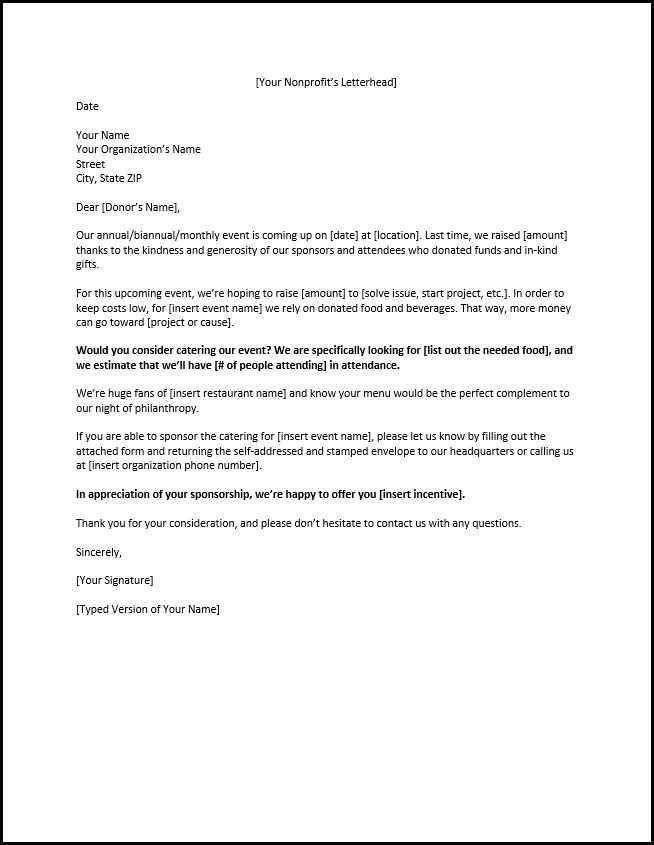
A key mistake is being vague or overly general in your approach. When describing your initiative and the support you need, it’s important to be clear and specific. Ambiguity can lead to confusion and may cause the recipient to overlook your message. To avoid this:
- Be specific about the type of support you require.
- Clearly outline the benefits for the other party.
- Use straightforward language that is easy to understand.
Overloading with Information
Another mistake is providing excessive details that overwhelm the reader. While it’s important to be thorough, overwhelming them with unnecessary facts can lead to disengagement. To keep your message focused, avoid:
- Including irrelevant information.
- Writing overly long paragraphs.
- Complicating your message with too much technical jargon.
Keep your communication concise and engaging, focusing on the most important points to make a lasting impression.